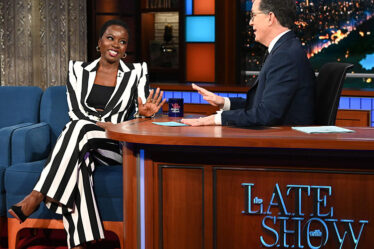
The meteoric rise of ChatGPT has sparked an artificial intelligence frenzy, stoking fears that the technology could upend jobs, search engines and schools. But online creators have identified one realm yet safe from the computer takeover: fiber arts.
A number of TikTok users have deployed ChatGPT to write patterns for crochet creations, yielding “cursed” results that are testing the boundaries of nascent artificial intelligence capabilities.
In January TikTok user Alexandra Woolner, who has been knitting for years and crocheting since 2019, hatched the idea to use ChatGPT to make a stuffed animal – initially asking it to write a pattern for a narwhal.
A typical crochet pattern resembles coding in its own way, with abbreviations and punctuation marks denoting the creation process. “Ch” is used to denote “chain”, and “sc” is “single crochet”, for example. Meanwhile, an asterisk (*) implies an instruction should be repeated and brackets [] are used to separate repeatable steps in the instructions.
Woolner was impressed to find that ChatGPT returned comprehensive instructions that resembled a typical pattern. Following the pattern exactly, they created what was described as an “AI-generated narhwal crochet monstrosity”. Woolner said although the product was anatomically disturbing, it was impressive the language-learning tool created a pattern that actually yielded a sea creature.
“The consensus among people who have seen it is that it looks wrong and ugly, but also very cute,” they said. “It came out shockingly very accurate while still being very, very wrong. It’s a weird mix, kind of an uncanny valley.”
Allow TikTok content?
This article includes content provided by TikTok. We ask for your permission before anything is loaded, as they may be using cookies and other technologies. To view this content, click ‘Allow and continue’.
The response online has been overwhelming, Woolner said, with the original video hitting nearly 900,000 views and subsequent attempts racking up thousands more. “I fully back the concept of doing this as proof that AI shouldn’t be used to generate art, but also I wuv himb,” one commenter wrote. “There are some things AI cannot steal”
Woolner is not the only creator to explore the potential crochet-based applications for ChatGPT. Lily Lanario, a London-based crocheter, said she was inspired to explore ChatGPT applications for crocheting because the centuries-old practice has thus far evaded mechanical replication due to its unpredictable and free-flowing stitching.
“I thought it would be interesting to explore a collaboration between human and machine in a space that computers cannot yet take from us,” she said.
Allow TikTok content?
This article includes content provided by TikTok. We ask for your permission before anything is loaded, as they may be using cookies and other technologies. To view this content, click ‘Allow and continue’.
Lanario had ChatGPT make a number of patterns including a cat, a duck, and a Pikachu with varying levels of success and accuracy. She said she found that the tool had some capacity to troubleshoot patterns that were not well-made, reworking instructions when she asked for changes like different colors or adding a forgotten body part.
Crochet patterns are particularly tricky for artificial intelligence to parse because they rely heavily on numbers, said Jessica Newman, director of the artificial intelligence security initiative at UC Berkeley’s Center for Long Term Cybersecurity, a type of dataset that AI struggles with more than words.
ChatGPT is a large language model of artificial intelligence, meaning that it is trained on large databases of text to replicate human communication, anticipating which words are likely to come after each other. These skills do not translate easily to numbers. The result? ChatGPT is bad at math.
“It may strike us as ironic that a computer system would be bad at math and good at creativity, but it does speak to an important fact about generative AI systems in general: they don’t understand context,” Newman said. “They don’t know what words or numbers actually mean, they are simply predicting what should come next.”
‘It looked like an alien’
To delve into our own ChatGPT crochet adventure, we asked Diana Ramirez-Simon – Guardian copy editor and crocheter extraordinaire – to attempt a narwhal and investigate whether the tool’s abilities have improved since Woolner’s first attempt in January. The result did not spark confidence that ChatGPT is becoming any better at creating crochet patterns.
“It was hilarious,” said Ramirez-Simon of the AI-created narwhal. “After I finished the head, it was pretty apparent that this was not going to be anything resembling an animal in nature. It almost looked like an alien.”
Like other crocheters, Ramirez-Simon, who has been crocheting for 23 years, said the pattern did resemble a real, human-created crochet pattern. But it seemed ChatGPT struggled with ratios and numbers. The animal’s eyes are at least half the size of its body, and there were no clear instructions as to how they should be attached.
“My daughter named him Blinky, because he can’t blink – his eyes are too big,” she said. “Still, he’s adorable.”
Much has been said about ChatGPT’s math struggles, and while it has made some recent updates to its numerical capabilities it seems accurate crochet patterns are still out of reach. Newman said these shortcomings of AI are to be expected as the technology progresses.
“At times it seems miraculous, and at other times it is completely nonsensical,” she said. “Its creativity is compelling because it has learned that from people – it is ultimately stitching together human intelligence and giving it back to us.”


